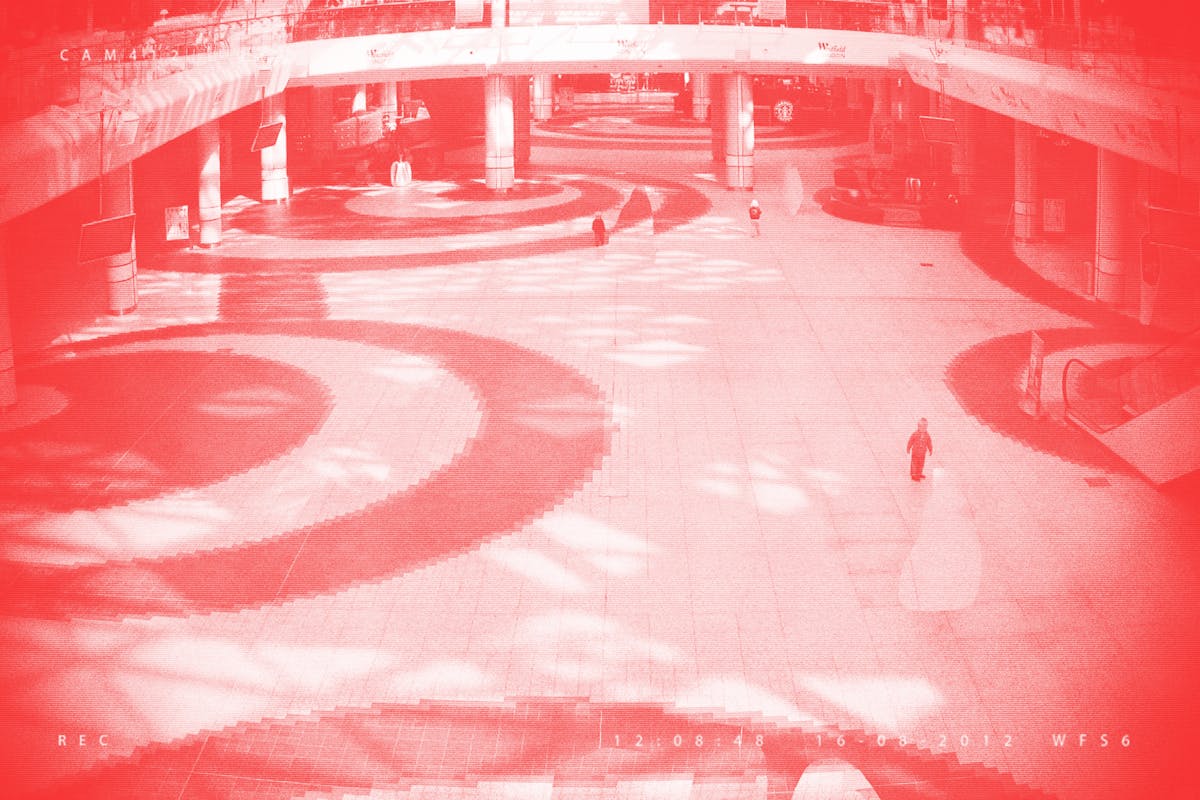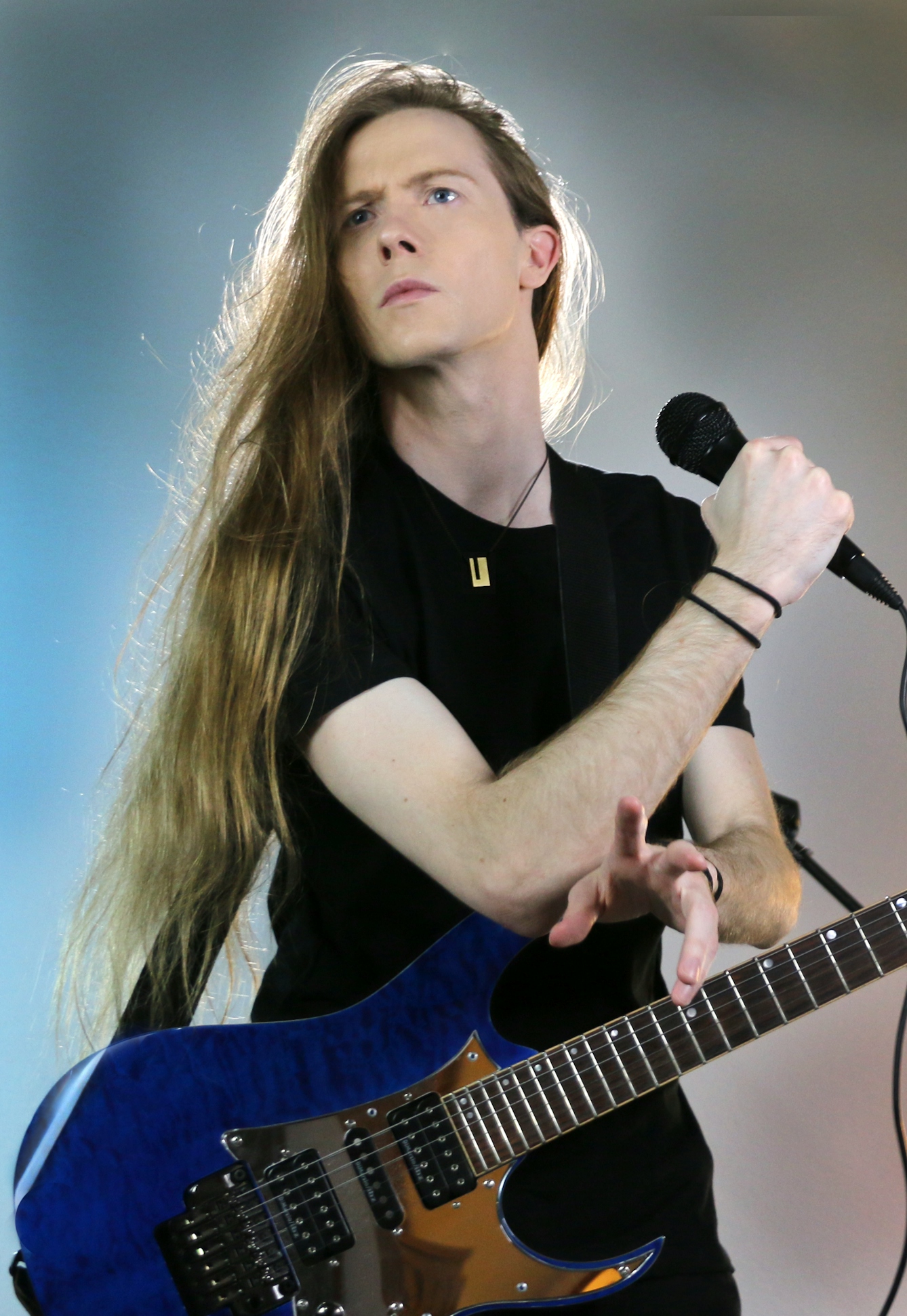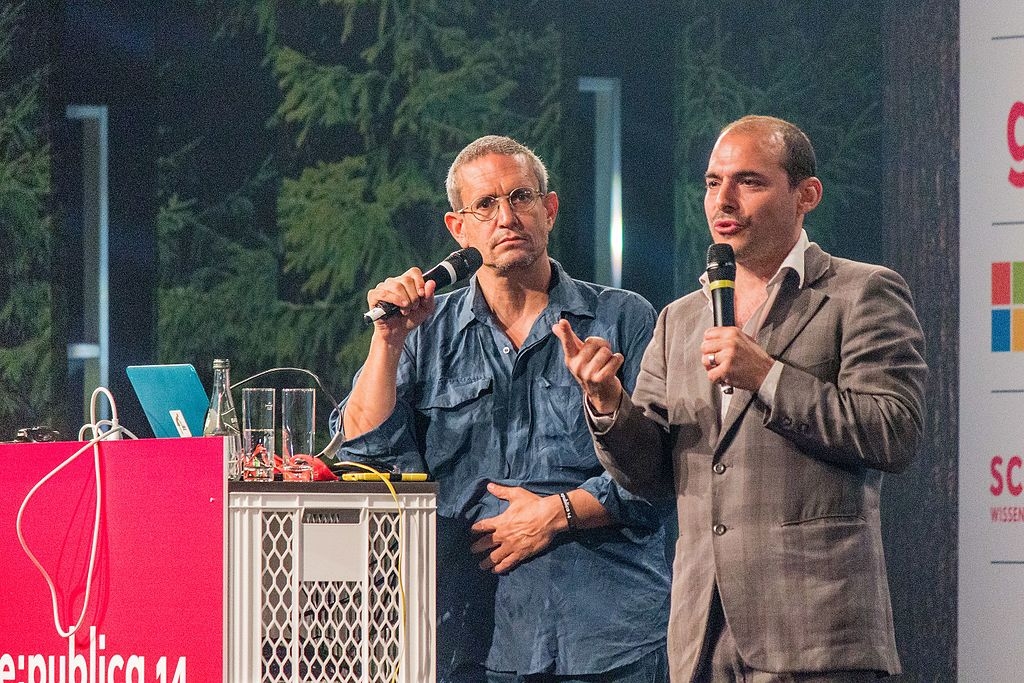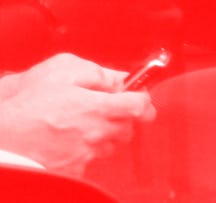An obscure musician creates a superstar legend for himself, causing financial loss to those who believed him. A group of artist-activists promise fake compensation to victims of an appalling industrial accident. In our new online world of malign deception, has parafictional art had its day?
Is fake news killing fictive art?
Words by A R Hopwoodaverage reading time 8 minutes
- Serial

“What is fake news? I turned an empty room into an international headline. If you are reading this, you are part of the illusion.”
On 9 November 2018 it was starting to become clear that the LA-based rock musician Threatin (real name Jered Eames) was perhaps not as successful as he seemed. Eames had spent most of the previous year creating a digital trail of fake evidence that ‘proved’ he had a label, a manager, an agent, a promoter, a press officer and a committed fanbase. Eames did have songs to promote, but everything else was a lie.
It was during his UK tour that Eames was outed, much to the dismay of his fellow band members, who’d been hired on the back of his apparent popularity. As well as the gig venues and support acts who had lost money, they were his main victims – they’d been totally duped.
In an interview with the BBC a few months later, Eames turned the tables on his critics and claimed that he was in creative control of the exposé and that he’d informed members of the press about the ruse before he started the tour – even hinting that the project was a form of ‘stage art’. He presented emails showing that he had contacted the press (under an alias) about the hoax before it had been revealed, but after further investigation it became clear that even these were doctored.
Let’s assume for a moment that Eames was not just conveniently rationalising away the desperate affair and imagine that he’s making a sprawling work of ‘stage art’ about the nature of celebrity in a ‘post-truth’ age. Is this a legitimate creative strategy? Is it ever ethically justifiable to deceive others in order to make an artistic point?

Jered Eames performing on tour in 2015
Lying to tell the truth
Reframing Eames’s deception as ‘art’ feels dangerous, but there are many artists who use similar deceptive strategies in their work. In 2009, art historian Carrie Lambert-Beatty used the term ‘parafiction’ to describe such approaches where “real and/or imaginary personages and stories intersect with the world as it is being lived”.
Her definition captured a way of working that emerged during the early 2000s and coincided with the rapid growth of the internet, a platform that gave artists the perfect context to create projects that mimicked official and unofficial sources of information. Such online activity often found its way back to a more conventional art context, allowing the critical space of the gallery or museum to partly reveal the fictions therein.
Is it ever ethically justifiable to deceive others in order to make an artistic point?
I’ve often found good fictive art to be deeply satisfying. You’re held in moments of uncertainty that can be genuinely disorientating; however, on further examination the true purpose of the work starts to unfold. You’re encouraged to play detective and rewarded by questioning the ‘truth’ in front of you. It asks you to accept that you may be fooled and that as a viewer you have a responsibility to navigate information with a sceptical eye.
As an artist in this field, I’m admittedly biased. Since 2004 my WITH project has advertised a range of self-help ‘solutions’ that provide ‘offsetting’ services for meaningful experiences – from creating doctored evidence of a happier (or more traumatic) past for you through to exercising on your behalf.
Other fictive artists also include Christoph Büchel, who set up a fully functioning community centre on the site of the former HSBC bank on Piccadilly, Michael Blum, who created an entire museum for a fictional activist at the Ninth Istanbul Biennial, and Aliza Shvarts, who supposedly performed a series of abortions for her final year art project at Yale – a work that the university subsequently described as a ‘creative fiction’.
Parafictions are not just in the domain of visual art. The magician Derren Brown has created extraordinary television events where participants are immersed in horrifying fictions that they think are real, and comedian Chris Morris used fictive strategies in the TV series ‘Brass Eye’ to hoodwink minor celebrities into backing a fake anti-drugs campaign.
This blend of fact and fiction always has an endgame: a critical point being made about the nature of participation and spectatorship. Visual artists tend to be interested in questioning dominant historical and social narratives, while entertainers like Brown and Morris use television to reveal the power of the media and the pliable nature of human psychology.
Parafiction and its victims
In justifying or performing parafictional strategies you have to accept that there are victims somewhere along the line, whether they are Eames’s bandmates, a gullible celebrity, the viewers who ‘don’t get’ the fakery or, in the case of Derren Brown, the participant who believes (even just for a short while) that a horrific event is real. Could rationalising that victimisation be an ethical slippery slope?
For 20 years, artist-activists the Yes Men have also used parafictional strategies to represent major corporations through duplicate websites and personal representatives. Their aim is to put words into the mouths of the intended targets, who say everything that the Yes Men think they should be saying.
In 2004, they posed on the news as representatives of the company Dow Chemical. While in character they issued what seemed to be a heartfelt apology and promise of compensation to those who were affected by the 1984 Bhopal tragedy, which was initially believed by the families of the victims to be real. The lie was supposed to reveal the truth about what Dow (which now owns Union Carbide, the company that ran the pesticide plant where the gas escape occurred) should be doing.

The Yes Men at an event in 2014
However well-intentioned, knowingly engineering such false hope to make a political point seems at best naive and at worst deeply unethical. The Yes Men responded to criticisms by saying that the distress they had caused the people of Bhopal was minimal compared to that for which Dow was responsible. But didn’t they pause to think at some point that the thousands affected had suffered enough?
It’s also worth reflecting on whether parafictive strategies really do encourage critical thinking in those beyond the trained viewer. Experimental psychologists like Professor Stephan Lewandowsky have studied the effects of misinformation and identified a phenomenon known as the ‘continued influence effect’: even after misinformation is retracted or corrected, many people continue to treat it as true. How best to address this cognitive failure is currently being investigated, but adding another layer of deception in order to reveal the misinformation doesn’t appear to be helping.
This finding has consequences for any artist, activist or entertainer who uses deception as a strategy: what if the creative deception inadvertently retains a continued influence after it has been revealed? What if parafictions are accidentally contributing to what computer scientist Aviv Ovadya – founder of the Thoughtful Technology Project – has called ‘reality apathy’, whereby constant contact with misinformation compels people to stop trusting everything that they see and hear?
Lies and vested interests
My intentions for the WITH project were never for my audience to go away from the website or one of our gallery projects believing that the organisation was actually ‘real’. But it was essential that the project’s implicit absurdity was framed by a website that appeared, at least on the surface, to be ‘real’. Once you scratched the veneer of that illusion, the corporate framework would fracture to reveal that the speculative solutions were mere imaginings, that each had a point to make about the frailty and paradoxes of identity.
And my audiences, in the main, seemed to revel in the way that they could acknowledge their own hidden anxieties through such fictional solutions and then laugh when they saw them speculatively realised in an art context.
But I can’t track every single person who engaged with the project, so I can’t prove that no one believed that WITH was actually real, and I have always felt that that possibility was a risk I was willing to take. But the world has changed a lot since I created the project in 2004. In 2019 the politicised weaponisation of misinformation is becoming more pervasive and the effects of such deceits are being felt around the world.
At a time when crucial research about climate change, vaccination, energy, food and public health is being obscured by lies from vested interests, pseudoscience and reactionary politics, we parafictional artists now perhaps need to approach our own use of deception with greater care.
Perhaps the time has come for us to not just enjoy playing with the slippery categories of fact and fiction, but to interrogate whether such strategies have their assumed effects.
I think that a compelling argument can still be made that good parafictional art can be understood as a prescient warning about the nature of authenticity and the dangers of misinformation in the digital age. But I also fear that it could be interpreted in hindsight as a complacent footnote in the history of art, where pranksters like Jered Eames were given space to reframe a simple con into something more culturally meaningful.
About the author
A R Hopwood
A R Hopwood is an artist and Wellcome Trust Engagement Fellow. He has collaborated extensively with psychologists to create art projects about memory, belief and misdirection, including WITH (withyou.co.uk) and the False Memory Archive. He was co-curator of ‘Smoke and Mirrors: The Psychology of Magic’ at Wellcome Collection in 2019.
